UP TO THE MINUTE
Covering the Court: ASBA 2024 - PODCAST TRANSCRIPT
March 31, 2025 at 8:13 p.m.Editor's note: The following is the transcript of a live interview with Tom Magner of California Sports Surfaces. You can read the interview below or listen to the podcast.
Intro: Welcome to CoatingsCast, the ultimate podcast dedicated to the science, art and innovation of liquid and fluid applied roofing, coatings for surfaces and waterproofing. It's time to roll up our sleeves, put on our lab coats and dive headfirst into the world of liquid protection that keeps your roofs and surfaces in prime condition. The future is here and it's liquid, so don't miss out. This is CoatingsCast where every drop counts in the world of roof and service protection.
Karen Edwards: Hello, and welcome to another episode of CoatingsCast from coatingsoffeeshop.com. My name's Karen Edwards, and today's episode we're going to be talking about a recent event and an association that's really exciting because it's about everything to do with the American Sports Builders Association. And joining me on today's episode is Tom Magner from California Sports Surfaces. Tom, welcome.
Tom Magner: Thank you. It's great talking to you as always.
Karen Edwards: Yeah. So just for those who might not know who you are, why don't you do a quick introduction, tell us what you do there at California Sports Surfaces?
Tom Magner: Sure. So my name's Tom Magner. I'm the Director of Product Management at California Sports Surfaces, which is a division of the ICP group. And we do exactly that, we manufacture acrylic coatings for sports surfacing; running tracks, pickleball courts, tennis courts, the whole nine yards. If you can play on it, we've probably made it at one point or another. And a integral member of the American Sports Builders Association, which we're going to talk about a bit today.
Karen Edwards: Yeah. So it's fascinating that... I attended the recent show, which was their Winter Technical Meeting and I got to hang out in your booth with your team who were great, by the way, as a newbie. I'm a newbie to that whole sports surfacing industry, and it's been really educational because I see a lot of similarities in different niche industries. It was a community feeling to it with a lot of good relationships going on. So let's back up though and start with the American Sports Builders Association. Maybe you could give just a little bit of history about how long they've been around and why they were formed and what they do for the industry.
Tom Magner: Sure. It's actually an interesting story, to me anyway. And let me start from, sometimes I run into people at a party and they say, "What do you do?" I say, "Well, I manufacture this coating to build sports." And they say, "I don't know, I didn't realize anyone did that." Every one of us drives by courts and tracks on the way to work, you see them every single day and you forget that this is an industry, it's a small industry, but it's sizable enough as you saw, but it's very niche and it's unique. So probably 1965 or so, there was a handful of builders from around the country that wanted to compare best practices. They wanted to talk to other people who did what they do. So our company at the time, which was known as California Products Corporation, actually sponsored a meeting, a luncheon and dinner in Baltimore, Maryland in 1965 and there was probably 25, 30 guys.
It was all guys at the time, and they were dressed like extras on Apollo 13 with the black glasses and the short sleeve, long shirts and ties and the whole nine yards. But those guys all got together and said, "Well, we need to do this more frequently. We should establish a trade association." So what was born out of that the following year was the US Tennis Court and Track Builders Association, was the official name of it and it continued that way for 25 plus years and it evolved like most organizations do. They decided they wanted to add this annual Technical Meeting at the end of what is the traditional building season, and that meeting incorporated some classroom sessions and comparing best practices and all that. And then at a later date, they added a trade show component and some dinners and some awards and it really has taken off from there.
Probably in 2004 or so, they decided to expand it and not just limit it to tennis court and track builders. There's basketball courses. Pickleball was starting to become a thing, and of course, turf was really taking off at that point. So they transformed into the American Sports Builders Association, and it really has taken on a new level since then. It's exploded in size and its scope, and in passion. When I first started attending, and the first time I went was in the year 2000 I believe, we used to pass the microphone around and introduce ourselves, so it was rustic in that regard.
Last week there were 1400 people there. So it really has taken off and it's a testament to the management organization and the volunteers who run it on a daily basis, but it really has become really a solid player in the industry. They now write construction guideline books that they publish on a variety of topics. They have position papers. A contractor runs into a pickle on a certain job, they have the industry association to back up why this might be happening. And then now they've recently established a university, university's probably a strong word, but an educational component where they issue out certificates to people trying to get into the industry to learn how to do sports construction, what differentiates it from other types of construction. So that's the CliffsNotes version. The meeting that we attended last week has also evolved in the time that I've been going there. Really, the bread and butter of that are the classroom sessions.
As you may recall, there's five breakout sessions, five concurrent sessions that break out into different topics. So if you want to learn about small business taxes here, environmental impact there, best practices for asphalt paving here, you can go mix and match whatever you want over the course of two plus days and it's a great opportunity to learn things. I've been going for 25 years. I've learned something every time. And it's also a great networking event. So many contractors, so many installers want to be contractors, people looking to get into their business, but then there's also architects and designers and manufacturers. There's a lighting company, there's surfacing companies, there's paddle companies. Anyone that somehow touches the sports construction industry has a role there. And it's really, really interesting.
Karen Edwards: It was a very diverse crowd being able to hang out at your booth during the networking evening, welcome reception that they had. I met landscape architects, I met installers and builders and you don't realize all the components that go into creating a recreational facility like a tennis court or a basketball court and people that make nets were there and then people that make nets that divide the courts.
Tom Magner: [inaudible 00:07:04].
Karen Edwards: And there's so many pieces and parts to it. One of the things that I felt was really interesting, and it goes along the line of best practices and it was a tennis roundtable that I sat in on and there were three contractors up there or builders, as we like to call them, talking about projects and challenges that they had, things that went wrong, what they did to overcome that. And it was really a great back-and-forth between the folks in the audience and the contractors on the panel or the builders on the panel, and I felt like something of that would be really invaluable, especially to someone who maybe is new to the industry. Are you seeing that pretty much at all of the events that the association has throughout the year?
Tom Magner: Absolutely, absolutely. This example that you just gave is a perfect example of what you can really get out of that organization because there's so many builders out there that may think they're on an island or they run into a particular situation, and here's three guys that have been added forever saying, "Yeah, this is what we ran into and this is how we addressed it," and it's three different perspectives, so you can pick and choose and everybody gets a little something out of it. We're a very small, unique industry, so when we butt up against paving in general, most pavers are used to doing miles and miles of roadways and parking lots to stop and do a pickleball court, which has very specific requirements, there's a different need and a different expectation and that's where we can bounce ideas off one another.
Karen Edwards: Yeah. And are you seeing that there are more, when you set a paver, there are multiple contractors that work on a project and are you seeing more contractors maybe that just specialize in paving for sport surfaces or courts? What's that looking like?
Tom Magner: I definitely see some of that, but what I actually see is more contractors that are broadening what they offer.
Karen Edwards: Okay.
Tom Magner: If you guys may have just done surfacing of tennis courts, then they added other types of courts, then they added lighting and fencing and now they do their own paving, whether they do their own post-tension concrete or they partner with companies that they can provide all of that soup to nuts. So I've seen it go both ways.
Karen Edwards: Yeah. That's really interesting. I had no idea of what it took to install that tennis court that I drive by every day going to the store or work, or whatnot, so it was really insightful. I'm just curious as an association, how many events a year take place?
Tom Magner: That is the flagship event is the Technical Meeting. They have a winter meeting that's usually toward the end of February where it's a much smaller group. We'll plan the Technical Meeting, but they'll also talk about some of the needs of the association. We need to come up with a new track installation book or something, and they'll form some committees to do stuff like that. Now, in addition to that, ASBA has recently added a number of regional events. In fact, they just went to... Oh, [inaudible 00:10:03], I'm going to say it wrong. It's either Wyoming or Montana, but they did a session specifically on floor sanding. So you go into indoor gyms and sanding floors, and they did a demonstration of that. And so they'll do things like that around the country that are more localized. So the guys that may not be able to make it to the national event, they can go to this one regionally. And they've done that in a handful of cities in Atlanta and the West Coast, and up in the Northeast and they've done a number of different smaller events like that.
Karen Edwards: So you just said the guys that might not be able to make it to the national event, but I want to stop you right there and say there was a women's networking event on the, I think it was the first day and there were a lot of women in that room. So it was really exciting to see that it's getting more diverse, and we are seeing more women get involved from back in the mid '60s when it was men that got together to do it, so I love that.
Tom Magner: That's a great point. I mean, it's not even the mid '60s, 12, 15 years ago, it was a very different demographic that filled that hall and we see a lot of new faces, a lot of new people breaking into the industry, women a lot more comfortable. I would say probably 20% of the attendees were women this year. A lot more people of color. It's really broadened the horizons of the industry. And now we had that women's networking reception, which I think might be the fifth year that they've done that and you're going to need a separate room pretty soon.
Karen Edwards: Yeah. The room was full, and I met a lot of wonderful people who were just so welcoming. I just said, "Hi, I'm new. It is my very first time. I don't really know anything." And they were like, "Oh, come on in and let's talk and what do you want to know?" And it was just a great vibe in the room and amongst the people. Everyone was just so friendly and so willing to talk to you and willing to help.
Tom Magner: And that's a great point. I have some competition. There are people that I butt up against every single day for busy work, but we see each other in an environment and we'll share a beer and we'll share some anecdotes and it's a club. It's a club of people that can relate to the challenges that you deal with every day.
Karen Edwards: So tell me a little more about California Sports Surfaces' involvement with ASBA. Do you serve on committees? What does your participation look like in supporting the association?
Tom Magner: Yeah. So they have a number of volunteer opportunities. They have breakout committees on a variety of topics. So I served on what was then the website committee for years and years, and they redeveloped a more functional website for the association. Then that was molded under what they called the marketing committee. And I served on that committee for a number of years. And we would decide among things, what publications would ASBA advertise itself in to make itself available to the network of the contractors that weren't aware of them, but also to advertise the manuals that they might sell to architects and designers, so it was a little bit of that. There are also different types of committees on very specific topics. So one of my colleagues, Paul, who didn't meet last week, he's actually retiring pretty soon, but you heard us talk about him.
He served on an asphalt committee where there was probably 20 different people from different walks of life trying to analyze some of the challenges that have developed in asphalt production over the last generation or so, and they issued a position paper at the end of that. I mentioned the position papers earlier. There's a position paper on, why does my court have foam or why would cracks develop on a court pinholes? Little silly things that you wouldn't even think of. They look for volunteers that will help put those all together. It might be five people, it might be 12 people. And then of course, the manuals themselves, very significant, two inch thick books on every detail of aspect of construction of that facility. Someone needs to flesh that out. And there's usually a committee of 10, 12 people that put those together, so those are the type of things and we've had people on various committees over the years and hope we continue to do so.
Karen Edwards: Yeah. You mentioned some of the challenges that come up, and it might have been you that was telling me about it, but someone at the show was talking about the asphalt from 15, 20 years ago is not the asphalt of today. And in the case of tennis courts or pickleball courts, you start with either post-tension concrete or asphalt. So how is that committee that Paul was on, did they just come up with recommendations or things you should be doing different because we're not going to probably change the basic ingredients, right?
Tom Magner: Yeah. And that's a great point right there. Asphalt specifically, but concrete, all production has changed over a generation. Part of it is driven by necessities, part of it's driven by environmental considerations. There's a lot more recycled content in asphalt now than there was a generation ago. That's not a bad thing, but it just creates some new challenges for our end of the industry. Compaction's a little harder. You're more prone to splitting and things like that. You need some additional additives. It's just making contractors aware of some of the things they need to be on the lookout for so that they can better prepare the surfaces, better prepare the overall project to address these sort of things. That's unique to asphalt, but there's certainly other things related to lighting. The lighting has changed significantly. You went from regular incandescent lighting, then we had compact fluorescent lighting, now LEDs are the big rage. They are a lot more portable, a lot more flexible, but you still have restrictions in certain communities and things like that. And this allows people to bounce those thought processes off to each other.
Karen Edwards: Yeah. One thing I learned at one of the presentations, I think it was from the US Tennis Association, where they said that the pandemic really contributed to the growth of tennis, even pickleball, these outdoor sports because people were looking for things that they could do to stay active that didn't involve being around people and I found that really fascinating. And with the growth of these industries, is that bringing its own set of challenges for the organizations to keep up?
Tom Magner: Yeah. Challenges, but really opportunities more than anything. You mentioned the pickleball tennis boom from COVID. It somewhat started before that, but it really took off during COVID. Originally, pickleball would be lines on a tennis court and then they wanted standalone courts. Now both sports enthusiasts are looking for their own facilities. There's a demand for it. There's certainly a lot of people going to municipalities asking for this sort of thing because there's only so much court space available. We're now seeing old mall spaces and retail spaces turned into makeshift courts. So there's a huge demand for it right now, and this organization has led the way.
Karen Edwards: Yeah, that's fantastic. One of the other things that I found, well, there's two other things I want to make sure that we mention. I thought it was very impressive that the cool technology that California Sports Surfaces developed in response to a need, and maybe you could just share that story real quick about how that all came about and the end result.
Tom Magner: Sure. So heat on the court is an issue for anyone. If you've watched some of the Grand Slam events, any tournament events, you see some of these matches that stretch into two, three hours and the player's dragging without saying the obvious, sometimes the court surface is 20 or 30 degrees warmer than the air temperature, sometimes even more. So we actually had a request out of Australia for a technology that would reduce the temperature of a court so it would be less likely to retain heat. So we've played around with it for a few years. We had a couple iterations that didn't quite last as long or didn't do what we wanted them to do. Now, the industry as a whole has always, not always, recently embraced solar reflective indices. So you tweak some pigments, make some new color offerings, more reflective colors, so those do help reduce temperature and help address part of it, but we felt there was an opportunity to take that to the next level.
So in addition to playing with the pigments, we reformulated some things from different additives. The result was what we call Cool Top, and it's a color coding that can go over any of our existing systems, but it helps reduce the heat sink of a court. And it's funny because people always get hung up on the tournaments, the players, where it really makes a difference is for a coach or somebody who's out there all day long. They may have three or four, or five appointments roll through and the appointments come and go, but the coach is still out there. And if you can make it a more comfortable environment for that person, that's really the message that we want to convey, that it does reduce the heat sink. It's more comfortable for the environment.
Karen Edwards: Yeah. I thought that was really impressive and cool because you mentioned that you could have two courts side by side, and the one with the cool technology was significantly cooler than-
Tom Magner: We have some real-world tests to [inaudible 00:19:36] did that just to put the regular stuff here, which is not bad, but it has different properties, regular stuff here. Cool Top right next to it. And I think there was a 32 degree Fahrenheit difference.
Karen Edwards: Wow.
Tom Magner: Just feet away.
Karen Edwards: Yeah. That's significant. Wow. The other thing that I was impressed about was to see that there was a session on artificial intelligence, AI and how's that going to affect the sports building industry. And there was a former Google person that presented. I learned a lot about that session, and thought it was cool to see that the association is recognizing, "Hey, AI, it's going to affect all of us and here's some stuff that you need to know about it," so that was really insightful. I'm wondering what your key takeaway was. What was the highlight of being at the show for you?
Tom Magner: The highlight for me every year, and this sounds trite, but it's the networking. We had probably 40 or 50 regular customers there. We had some competitors that I've seen for years. Having gone to this event for many years, it's a small family and I do know a lot of folks. Some of them, it's the only time I get to see them. So for me, that's the most valuable part of it. The fact that we can also then break off and learn about new products, learn about opportunities, learn about AI. That wasn't really on my radar screen, but I guess it needs to be. And I mentioned before, there's a guy who does things on taxes. There was an attorney who came one time and talked about how to pass your business on to the next generation, things that we don't even think about. I always learn something out of it.
Karen Edwards: Yeah. That's fantastic. I love that. It's beyond just the install and the products, it's really having that business acumen and understanding how to be successful and what do they call that? Succession, right? Succession planning, because that's important too. Everybody wants to retire someday.
Tom Magner: That's right. That's the whole thing.
Karen Edwards: Excellent. Wow. Tom, thank you so much for joining me and talking through the conference. If you are in this market, if you're doing anything with sports surfaces, I highly recommend putting it on your calendar for next year. The 2025, you said it's always at the end of the year, probably December usually?
Tom Magner: It's always around the first week of December. I believe next year's is in San Antonio. They do try to bounce around the country, but it's always in that timeframe. And sportsbuilders.org is the website.
Karen Edwards: Thank you. Sportsbuilders.org and Tom is with California Sports Surfaces. What's your website?
Tom Magner: Californiasportssurfaces.com?
Karen Edwards: Easy, easy enough. And they also have a full directory on CodingsCoffeeshop.com. If you want to find more information, you can visit their directory. It has their contact information and anything that's happening that's new at the company. Tom, again, thank you. This has been great. Thank you all for listening. Be sure to subscribe on your favorite podcast platform because we want to see you on a future episode. And thanks for being here today. Bye-bye, everyone.
Outro: Thanks for joining us on this coding adventure. Stay tuned for more episodes. And in the meantime, be sure to follow us on social media to stay updated with all things roof coatings. Until next time, stay coded. For more information, go to CodingsCoffeeshop.com.


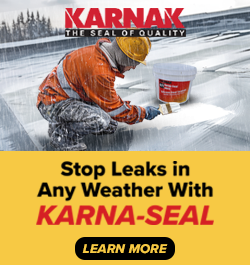
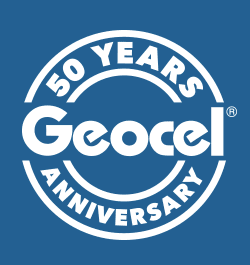






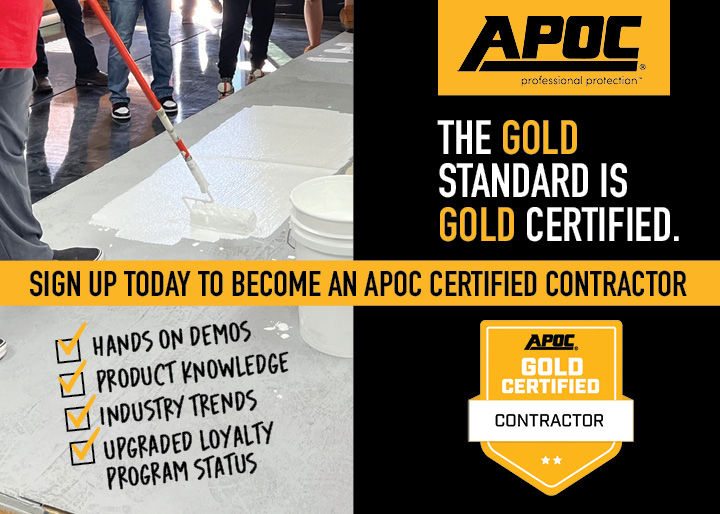

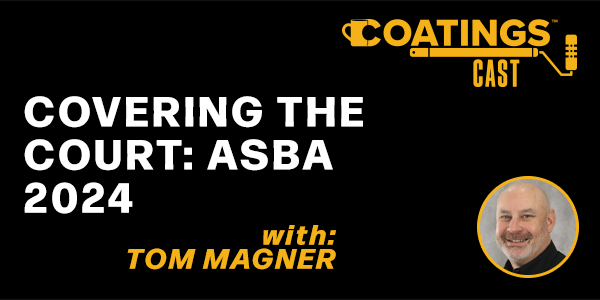

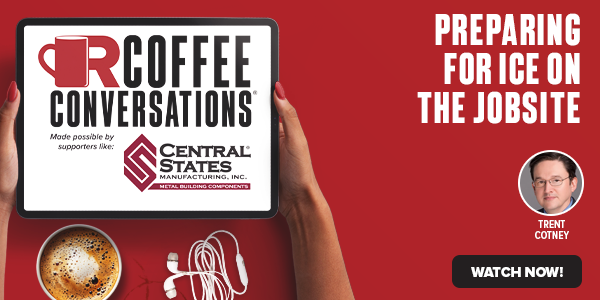
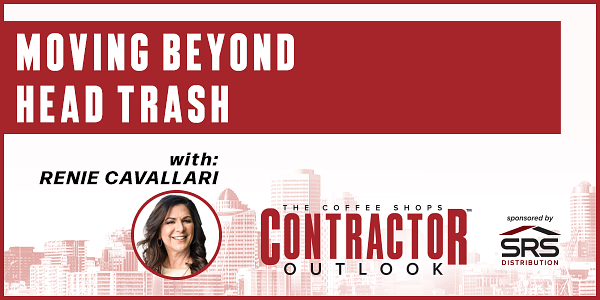


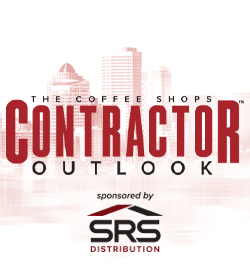

Comments
Leave a Reply
Have an account? Login to leave a comment!
Sign In